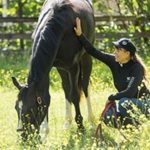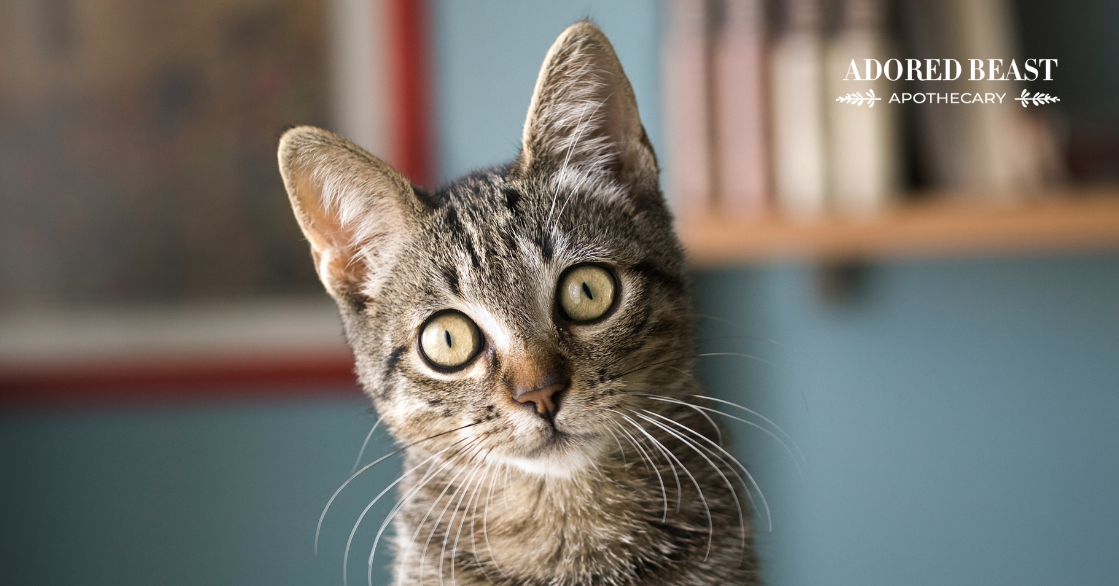I need to start this blog by saying that I am not a vet. I’m a researcher, an animal nutritionist, and a concerned pet parent. I also need to clear the air (before it gets smoky) to say that I have a large list of well-respected and amazing veterinarians that I work with and recommend to my clients. Our veterinarians play a vital role in helping our pets stay healthy. We need them. They dedicate their lives to their work. They care. I’m not here to judge, but rather to offer some factual food for thought.
This is a sensitive topic, but an important one: Why do so many veterinarians object to raw feeding?
When I hear some of the professional opinions surrounding the dangers of raw pet food, I have to say, I get more than a little bit fearful and confused. I regularly hear people telling me their veterinarians have tried to steer them away from raw for a few different reasons:
- Risk of pathogenic bacteria (eg. salmonella and e. coli)
- Little scientific evidence that raw is beneficial
- Risk of nutritional deficiency – it’s not balanced and complete
Where did these theories come from? And are they accurate?
To understand where the objections to raw food come from, we need to dig a little. All of us – pet parents, animal care professionals, and veterinarians – would benefit from looking at the above statements for what they are without judgement and with an open mind. Each one could be considered true in extreme scenarios, so we need to break each one down to get the full picture.
And that’s what I plan to do here…
Raw Pet Food: Digging Deep
If done correctly and mindfully, raw pet food is completely safe. In fact, scientific research proves that it promotes health and longevity.
In my experience (and I know I’m not alone in this), much of what vets share with us, they learned in school. We need to question what veterinarians are learning at school, because it matters. I’m not questioning the good intentions they have, their passion for helping animals or the hard work that veterinarians do. I’m questioning the logic and intention of nutritional education in vet schools.
To dig deep, let’s compare the human food/health world to the pet world and see how the schools of thought differ…
1. The Concept of Healthy Eating
Human World: Healthy diet is qualified in terms of freshness and variety, often with little to no mathematical equations involved. For customized diets, doctors refer patients to nutritionists for help. Leading health officials advise avoiding process and packaged foods to help reduce the risk of serious health issues including diabetes, heart disease, obesity, and cancer. (1) (2) (3)
Pet World: Veterinarians are the only medical profession that recommends highly processed bagged feed over fresh food diets and claim that this supports health and longevity. This includes the Canadian and American Veterinary Medical Associations and The American Animal Hospital Association. (4) (5) (6)
Correct diet is qualified through whether or not it follows the American Association of Feed Control Officials nutrition guidelines regardless of freshness or ingredient quality and was designed for processed animal feed, not fresh food. Period. Even board-certified veterinary nutritionists follow these rules but “scientific formulation” doesn’t always equate to healthy eating.
I always use the analogy of Frankenstein for the pet feed industry. We cannot disassemble food and be arrogant enough to think that we know exactly how it will all fit back together. We have a fraction of the scientific information we need in order to accomplish this. Science is a process. There is no end to discovery in true science and, believe me, we haven’t even scratched the surface when it comes to nutrition for ourselves and our animals. We may know a little but that doesn’t mean we stop learning and exploring.
Coincidentally, according to Banfield, obesity has increased by 169% in dogs and 158% in cats just in the past 10 years….
2. Food Safety Standards
Human World: E. Coli outbreak on romaine lettuce makes headlines. But, doctors don’t start telling us to avoid lettuce… This is because the health benefits outweigh the risks and people are smart enough to adjust and make good choices.
Pet World: Theoretically, animals and humans are at risk for becoming ill from pathogenic bacteria contamination due to raw pet food. However, dog and cat digestive systems are anatomically and physiologically built to handle a much higher bacteria load than humans. Just like in the human world, it matters how the fresh foods are handled and prepared to keep you and your family safe. And, this doesn’t just apply to raw pet food! ALL pet food (yes, even dry food) can harbour pathogenic bacteria.
A recent study of over 16, 000 raw-feeding canine households found that only 0.2% of all applicants surveyed suspected a pathogenic contamination due to their dog’s raw food diet.
3. Environmental Sterility and Health
Human World: Sterility of our food and living environments is being recognized as a detriment to our health, damaging our microbiome. (7) (8) (9) It is now understood that fresh, organically grown, plant-based foods have special soil-based microbiomes that benefit our health when eaten. (10)
And, meat grown in a healthy way (eg. in a biodiverse environment/grass-fed) vs. meat grown in feed lots with sterile ground and antibiotics also have completely different microbiomes. (11) (12)
Pet World: The idea that processed pet feed is sterile is still accepted by animal care professionals. Avoiding raw diets is being advertised by all the North American veterinary associations as an essential part of animal welfare efforts. The problem is that processed food isn’t actually sterile. And because the “good” bacteria are killed along with the “bad” bacteria in the extrusion process, pathogens (eg. salmonella, listeria, and e. coli) can grow freely on pet feed with nothing to keep them in check at the end stage.
Bacterial contamination recalls don’t just happen with raw food diets. Take a look at the FDA veterinary recalls database to see the number of processed foods recalled for this very reason. (13)
Animal feed itself affects the microbial community, promoting an unhealthy microbial community in the gut. (14)
4. Food-related Disease
Human World: In 2009, the FAO (Food & Agriculture Association of the United Nations) created the NOVA system: a system used to identify and classify the level of processing associated with foods available for human consumption. The driving factor behind creating this system was to track the incidence on non-communicable disease (NCD) (eg. chronic disease) in relation to diet. The 2019 report confirms that ultra-processed diets contain higher NCD promoting nutrients (eg. sugar and sodium) and less NCD-protective nutrients compared to unprocessed foods.
Pet World: The leading official animal health agencies including the FDA, the American Veterinary Medical Association (AVMA), the Canadian Veterinary Medical Association Association (CVMA), and the American Animal Hospital Association (AAHA) maintain that raw pet food is dangerous to animals and discourage their use for the sake of animal welfare. From some of the same agencies, including the FDA’s veterinary recall database, we are seeing evidence that processed diets aren’t as shiny and safe as they seem….
- Processed food is actually killing pets. The most deadly ingredients? According to the FDA recall database, it’s mouldy grain products and synthetic vitamin/mineral pre-mixes.
- Mouldy grains: Recalls for processed foods that contain poisonous aphlatoxin from mouldy grain products are occurring at an alarming rate. Most recently, 70 dog deaths were directly linked to alpha toxin poisoning, reported in 2021.
- Vitamin and Mineral Toxicity: The other frequent reason for pet feed recalls is toxic levels of fat-soluble vitamins and minerals from miscalculated pre-mixes that are added to balance the diet. In 2018, the FDA recalled several pet feeds due to vitamin D levels 70 times higher than what was recommended. Vitamin D toxicity can cause kidney failure and death. It’s no joke. The frequency at which this is happening is not ok. Other pet food recalls include those for toxic levels of lead, copper, chlorine and more.
- There are other dangerous additives that could be in your pet’s feed including melamine, preservatives, herbicides, pesticides, and more. The truth is that you don’t really know what’s in the bag. Unfortunately, what it says on the bag might not be what’s in the bag. Click here to learn more.
- Species-appropriate nutrition is not just a fad. It is science. Failing to recognize the naturally occurring foods that best suit a species leads to the risk of nutritionally created diseases. We cannot do better than nature.
5. The Power of Education
Human World: It is being recognized that there is a lack of emphasis and priority on nutrition education in the human medical education system. (15) (16) (17)
Pet World: There is still little to no recognition by veterinary medical schools on whole food nutrition. All animal nutrition education is based on AAFCO formulation and feed theory. This includes the education of board-certified veterinary nutritionists who are considered specialists and the ultimate animal nutrition experts.
And…. (this is where it gets a little more prickly): the largest veterinary pet feed line owns the largest number of veterinary hospitals (over 2000) in the USA. (18)
That same company also owns the Royal Canin Veterinary line of pet feed. They are one of the top 5 multibillion dollar corporations in the pet feed industry, and, conveniently, the most recommended prescription feed sold in veterinary clinics all over North America. (19)
I don’t need to elaborate anymore here. I think you can connect the dots yourself. Again, this really has nothing to do with veterinarians but a much deeper systemic issue in the animal care industry.
When It Comes to Nutrition, Vets Might Not Be Your Go-To
Yes, I said it.
As a professional in the animal health industry for over 20 years, a dog breeder, and a pet parent to countless dogs and cats, I have a very different experience of fresh food diets than what veterinarians learn in school. I have worked and researched tirelessly to understand the risks and the benefits of raw, home-cooked, and processed diets for animals. I have challenged veterinarians on countless occasions about where they are getting their information about nutrition. Many of them admit freely that they don’t have a good understanding of nutrition. And I have the utmost respect for those who are humble enough to recognize this. These are the veterinarians I work with and recommend to my clients.
My question to the veterinary associations is: Where does animal welfare fit into the pet feed picture I’ve just painted above?
It’s Your Choice to Decide What’s Right for Your Pet
I consult with pet parents every day and my main goal is to give them the tools to be their animal’s healer. I cannot stress it enough that YOU are their guardian and no one else. Your veterinarian is there to help you when medical assistance is needed, but you know your pet best. No one else. You get to choose what’s right. I encourage all pet parents to do their own research and not just to take my word or the word of anyone else to care for your animals. We are here to help you find the answers but it’s you who has to take the reins. If raw pet food isn’t what’s right for you and your pet, that’s ok. It’s your pet, your choice, your journey.
I hope this article will spark a fire for both animal health professionals and pet parents. I hope it’s a fire that doesn’t invoke fear or anger but love and openness to discovery.
REFERENCES:
- World Health Organization: Healthy Diet, 2020
- Canada’s Food Guide, 2018
- CBC: The Nature of Things: Brazil’s revolutionary new food guide focuses on how food is made, 2019
- American Veterinary Medical Association: Policies, 2021
- Canadian Veterinary Medical Association: Policies, 2018
- American Animal Hospital Association: Position Statements, 2011
- Re-Thinking Sterile: The Hospital Microbiome: Environmental Health Perspective, 2014
- Microbes Associated with Foods from Plant and Animal Sources: Frontiers in Microbiology, 2018
- Cooking shapes the structure and function of the gut microbiome: Nature Microbiology, 2019
- Does soil contribute to the human gut microbiome?: Microorganisms, 2019
- Applications of soil, plant and rumen microbiomes in pastoral agriculture: Froniters in Nutrition, 2019
- Effect of grain-feeding on the microbiotia in the digestive tract of cattle: Animal Frontiers, 2016
- Food and Drug Administration Veterinary Recall Database, 2021
- Raw meat based diet influences faecal microbiome and end products of fermentation in healthy dogs: BMC Veterinary Research, 2017
- Why nutrition education is inadequate in the medical curriculum: a qualitative study on students’ perspectives on barriers and strategies: BMC Medical Education, 2018
- Increasing nutrition education in medicine: ACP Internist, Nutrition, 2020
- Nutrition medicine: Nutrition education for medical students and residents: Nutrition In Clinical Practice, 2010
- A Concerning Pet Industry Monopoly? The Truth About Pet Food, 2017
- The World’s Top 10 Pet Food Companies: Pet Food Industry











![[RESEARCH] Is Herbicide Safe for Dogs?](https://blog.adoredbeast.com/wp-content/uploads/2025/06/herbicides-safe-for-dogs-103x55.png)
